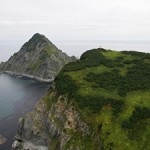 BY ETHAN SACKS
BY ETHAN SACKS
DAILY NEWS STAFF WRITER
Director James Cameron says audiences don’t have to look to the stars to find resonance for his sci-fi blockbuster “Avatar,” which returns to theaters Friday with nine more minutes of footage.
They can find a big, oozing parallel right in the Gulf of Mexico.
“The BP mess is a classic example of how our energy policies, or lack thereof, are going to hurt us,” Cameron recently told the Daily News. A symptom of the same corporate greed that drove the fictional RDA Corporation to pillage the planet Pandora in the film, he said.
Cameron had a close-up view of the environmental devastation in the first few weeks after the April 20 Deepwater Horizon rig explosion. In early June, the 56-year-old writer-director-producer convened with a group of 25 experts who came up with a suggestion of a method to plug the leaking wellhead that had been spewing one million gallons of oil a day. After ignoring his group’s report, BP successfully adopted an almost identical method two months later.
“Lots of technologies were offered to us. They were thoroughly evaluate by a team of industry engineers,” BP spokesman Robert Wine responded by email. “We did have some contact with James Cameron. His technologies were not suitable.”
But Cameron said the the oil giant has been running roughshod over the EPA, Coast Guard and scientific experts since the early days of the largest environmental disaster in U.S. history. He points to the use of the toxic dispersant, Corexit – BP says it weighed the risks and had government approval – and the company’s blockade of outside inspection of the wellhead site.
“It’s a bit like having the bank robbers run the video surveillance of the vault,” says Cameron.
He’s hoping moviegoers leave his movie this weekend thinking a little bit more about the environment – in the Gulf and beyond. There’s nothing wrong with a little nutritional value to go with all that popcorn in Cameron’s book.
“[The world is in worse shape] than anything I dreamed up for ‘The Terminator,’” said Cameron, referring to his 1984 post-Apocalyptic thriller. “I should make a new ‘Terminator’-like movie where someone travels back in time to warn us before it’s too late.”
NEW AVATAR EDITION RELEASED IN THEATERS
Kamchatkas ecotourism strives for investment
26 August, 2010, 17:10
 Kamchatka has the highest prices for gas, fuel and food in Russia. Everything needs to be shipped in. Located in the far north east of Russia, the region feels as remote as anywhere on Earth.
Kamchatka has the highest prices for gas, fuel and food in Russia. Everything needs to be shipped in. Located in the far north east of Russia, the region feels as remote as anywhere on Earth.
Opportunities for small business are further complicated by the extreme climate of a land bedeviled by earthquakes and typhoons. But it is just this quality of untamed wilderness that makes Kamchatka a destination for adventurous tourists – and the money they bring.
Although larger than California, the peninsula has only 300 kilometers of paved roads.
Traveling to most parts of Kamchatka is almost impossible for anyone who does not have access to an Mi-8 helicopter, Galina Volgina, head of department, Kamchatsky ecotourism society, points out.
“Ecotourism is purely small business, it’s 100% self-reliant risk and it provides employment for the population. The main problem is lack of infrastructure. We need small aviation and helicopters in order to take tours around Kamchatka, but it costs a lot and regulations are tough for the operations of helicopters and small aviation” Volgina insists.
Kamchatka is home to many natural wonders, including 26 active volcanoes, half the world’s population of Steller’s sea eagles, and the largest population of brown bears on Earth. But in order to see it all, one needs to flee the city by boat or helicopter.
The average price for an hour’s rental of a helicopter starts at $3,500, seriously adding to the price of tours. But operators say the number of tourists is still higher than the number of available helicopters.
Over 20,000 nature-lovers come to Kamchatka annually. Most arrive on cruise ships, spending just a few days and seeing only the tip of the iceberg when it comes to the peninsula’s attractions.
Just one third of travelers come as real adventurers. Tourists from Japan and the US are ready to pay $200 a day to discover nature’s hidden treasures.
But even with the high prices, the tour operators find it difficult to make a profit, not to mention the high direct expenditures on infrastructure.
“The tourism industry in Kamchatka is worth $3 million. However, most of that is taken up by costs – hotels, helicopters, off-road jeeps and special transportation,” says Volgina.
Kamchatka is unlikely ever to become a mass holiday destination. But the locals believe there is room for specialist ecotourism to grow. They want the government to invest more seriously in the peninsula’s infrastructure to improve access, while preserving its unique natural heritage.
Man honored for solar energy efforts
A San Rafael man who drowned June 25 in a kayak accident is to receive a posthumous award next month for championing clean energy alternatives.
Ray Dracker, a 55-year-old Gerstle Park resident, was at the forefront of a solar energy project in the Mojave Desert worth several billion dollars prior to his death in North Carolina. Dracker was a senior vice president with Solar Millennium, a German company that was working with Southern California Edison to build two 242-megawatt solar power plants worth $1 billion each on federal land near Death Valley.
The award is being given Sept. 14 by the Center for Energy Efficiency and Renewable Technologies. The group’s Clean Power Champion Awards Ceremony will be at the Citizen Hotel at 926 J St. in Sacramento.


